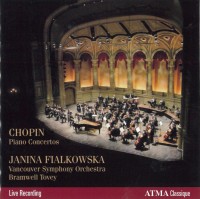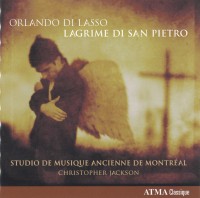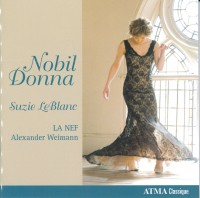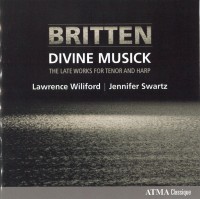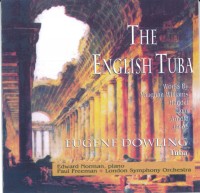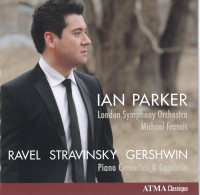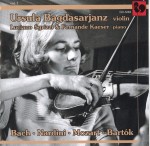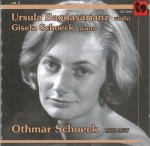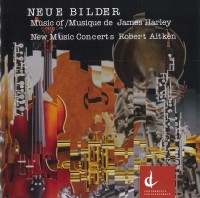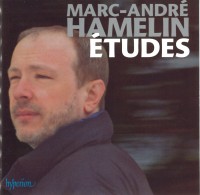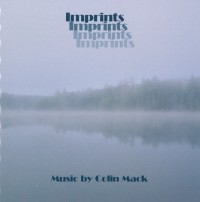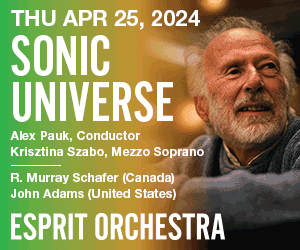OLD WINE IN NEW BOTTLES – Fine Old Recordings re-released - December 2010
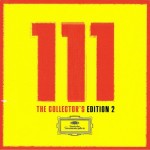 Deutsche Grammophon has issued Volume 2 of their Collector’s Edition celebrating their 111 years of leadership in the recording industry (DG 4779142, 56 CDs). The discs are presented in a cube shaped box that matches the first volume of 55 CDs issued earlier this year. Available space makes it impossible to list the contents or even the artists. Sufficient to say that this is a treasure house of superb recordings of desirable repertoire, both familiar and slightly obscure, from complete operas, Carmen and La Traviata, symphonies, concertos, instrumental recitals, vocal recitals, and the list goes on. DG’s top instrumentalists, singers, orchestras and conductors artists are all here, from Abbado to Zimerman. Each individual disc is sleeved in the original cover-art and the 140 page enclosed booklet includes complete contents and recording data. Retailing at about $2.50 per disc, this limited edition compact box that is much, much bigger on the inside, is rather difficult to resist. Check complete contents at www.deutschegrammophon.com.
Deutsche Grammophon has issued Volume 2 of their Collector’s Edition celebrating their 111 years of leadership in the recording industry (DG 4779142, 56 CDs). The discs are presented in a cube shaped box that matches the first volume of 55 CDs issued earlier this year. Available space makes it impossible to list the contents or even the artists. Sufficient to say that this is a treasure house of superb recordings of desirable repertoire, both familiar and slightly obscure, from complete operas, Carmen and La Traviata, symphonies, concertos, instrumental recitals, vocal recitals, and the list goes on. DG’s top instrumentalists, singers, orchestras and conductors artists are all here, from Abbado to Zimerman. Each individual disc is sleeved in the original cover-art and the 140 page enclosed booklet includes complete contents and recording data. Retailing at about $2.50 per disc, this limited edition compact box that is much, much bigger on the inside, is rather difficult to resist. Check complete contents at www.deutschegrammophon.com.
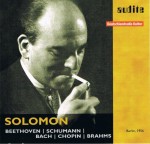 Just when we thought that there were no unreleased Solomon recordings, AUDITE has licensed 2CDs worth of recordings made in Berlin by the RIAS on February 23 and 24, 1956 (Audite 23.422). Solomon, for those who are unfamiliar with the name or his superlative musicianship, was a child prodigy (so who wasn’t, I hear you say) who continued to grow to become a supreme interpreter of Beethoven, Brahms, Schumann, and Chopin. He toured North America in 1955 with recitals of works by Beethoven, Bach, Mozart, Chopin, and Schumann. In this recording we hear two Beethoven sonatas, no.3 and The Moonlight, Schumann’s Carnaval, Bach’s Italian Concerto, Chopin’s Fantasie op.49, Nocturne op.9 no.1, and the Scherzo no.2 op.31. Three pieces by Brahms conclude this two hour recital, two Intermezzos and the Rhapsody in B minor, op.79 no.1. Exactly two hours of insightful interpretations played with ardour, elegance and panache (in the nicest sense) re-affirms Solomon’s place high on the honour role. After suffering a stroke during recording sessions in October 1956, he left the stage and lived until 1988 cared for by his wife. The liner notes have a mini bio and an appreciation of the pianist who, quite literally, became a legend in his own lifetime. Considering the artist and the repertoire, this is set to treasure.
Just when we thought that there were no unreleased Solomon recordings, AUDITE has licensed 2CDs worth of recordings made in Berlin by the RIAS on February 23 and 24, 1956 (Audite 23.422). Solomon, for those who are unfamiliar with the name or his superlative musicianship, was a child prodigy (so who wasn’t, I hear you say) who continued to grow to become a supreme interpreter of Beethoven, Brahms, Schumann, and Chopin. He toured North America in 1955 with recitals of works by Beethoven, Bach, Mozart, Chopin, and Schumann. In this recording we hear two Beethoven sonatas, no.3 and The Moonlight, Schumann’s Carnaval, Bach’s Italian Concerto, Chopin’s Fantasie op.49, Nocturne op.9 no.1, and the Scherzo no.2 op.31. Three pieces by Brahms conclude this two hour recital, two Intermezzos and the Rhapsody in B minor, op.79 no.1. Exactly two hours of insightful interpretations played with ardour, elegance and panache (in the nicest sense) re-affirms Solomon’s place high on the honour role. After suffering a stroke during recording sessions in October 1956, he left the stage and lived until 1988 cared for by his wife. The liner notes have a mini bio and an appreciation of the pianist who, quite literally, became a legend in his own lifetime. Considering the artist and the repertoire, this is set to treasure.
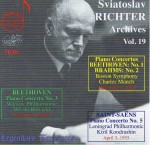 The year was 1960. The long awaited arrival of Sviatoslav Richter on the North American concert scene was greeted with excitement and enthusiasm. He was already an iconic figure and remains the most idolized cult figure of classical piano to this day. A new release from DOREMI (DHR-7972/3, 2 CDs) brings us for the first time his historic debut with the Boston Symphony Orchestra playing the First Beethoven Concerto and the mighty Brahms Second. This extraordinary concert was broadcast across the continent and can now be heard on CD for the first time in lucent, dynamic sound. It is thrilling to hear the resplendent Boston Symphony, “The Aristocrat of Orchestras,” in its heyday under the energetic Charles Munch accompanying Richter who was in top shape, technically and artistically. Also included is the Saint-Saëns fifth piano concerto with the legendary Leningrad Philharmonic Orchestra under Kiril Kondrashin from 1955 in a performance second to none in my memory. From the year before the Beethoven Piano Concerto No.3 with Witold Rowicki and the Warsaw Philharmonic Orchestra is a classic, stylistically pure performance.
The year was 1960. The long awaited arrival of Sviatoslav Richter on the North American concert scene was greeted with excitement and enthusiasm. He was already an iconic figure and remains the most idolized cult figure of classical piano to this day. A new release from DOREMI (DHR-7972/3, 2 CDs) brings us for the first time his historic debut with the Boston Symphony Orchestra playing the First Beethoven Concerto and the mighty Brahms Second. This extraordinary concert was broadcast across the continent and can now be heard on CD for the first time in lucent, dynamic sound. It is thrilling to hear the resplendent Boston Symphony, “The Aristocrat of Orchestras,” in its heyday under the energetic Charles Munch accompanying Richter who was in top shape, technically and artistically. Also included is the Saint-Saëns fifth piano concerto with the legendary Leningrad Philharmonic Orchestra under Kiril Kondrashin from 1955 in a performance second to none in my memory. From the year before the Beethoven Piano Concerto No.3 with Witold Rowicki and the Warsaw Philharmonic Orchestra is a classic, stylistically pure performance.
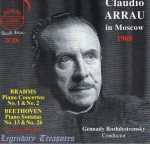 Claudio Arrau established himself as one of the very top classical pianists of all time. Almost 20 after his death he remains on the short list of critically acclaimed, elite pianists of the 20th century. His repertoire highlights were from the late classical and romantic eras, notably Brahms and Beethoven. Arrau probably led the field in live performances of the two Brahms Concertos, of which he made many esteemed recordings. Into the 1960s Arrau was still a titan of the keyboard and at the full technical and interpretative powers. He played both concertos in a memorable concert on May 31, 1968 in Moscow accompanied by Gennady Rozhdestvensky and the USSR TV and Radio Large Symphony Orchestra. Melodiya engineers were on hand to document this special event, subsequently issuing a limited edition of two stereo LPs. DOREMI has resurrected and restored these obscure recordings on a two CD set (DHR-7890/1). These are towering performances distilling the late pianist’s lifetime of devotion to this repertoire and his total understanding, absorption an insights supported by an empathetic conductor and his orchestra. They are heard in splendid stereo sound thanks to Melodiya’s engineering and DOREMI’s transfers. Two Beethoven sonatas, nos.13 and 26, from the same Moscow visit fill out these two discs.
Claudio Arrau established himself as one of the very top classical pianists of all time. Almost 20 after his death he remains on the short list of critically acclaimed, elite pianists of the 20th century. His repertoire highlights were from the late classical and romantic eras, notably Brahms and Beethoven. Arrau probably led the field in live performances of the two Brahms Concertos, of which he made many esteemed recordings. Into the 1960s Arrau was still a titan of the keyboard and at the full technical and interpretative powers. He played both concertos in a memorable concert on May 31, 1968 in Moscow accompanied by Gennady Rozhdestvensky and the USSR TV and Radio Large Symphony Orchestra. Melodiya engineers were on hand to document this special event, subsequently issuing a limited edition of two stereo LPs. DOREMI has resurrected and restored these obscure recordings on a two CD set (DHR-7890/1). These are towering performances distilling the late pianist’s lifetime of devotion to this repertoire and his total understanding, absorption an insights supported by an empathetic conductor and his orchestra. They are heard in splendid stereo sound thanks to Melodiya’s engineering and DOREMI’s transfers. Two Beethoven sonatas, nos.13 and 26, from the same Moscow visit fill out these two discs.
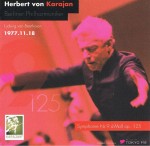 In November 1977, Herbert von Karajan and the Berlin Philharmonic Orchestra toured Japan. They opened with the Brahms Symphonies in Osaka from, including the Violin Concerto, the Double Concerto and the Second Piano Concerto. Their last concert there ended with a Karajan speciality, Ein Heldenleben. In the Fumonkan in Tokyo they performed the nine Beethoven Symphonies and two concertos with Alexis Weissenberg on six consecutive evenings. Tokyo FM has issued the nine symphonies on five CDs derived from their masters recorded in concert. The soloists in the Ninth Symphony (TFMC 0029) are soprano Barbara Hendricks, alto Heljä Angervo, tenor Herman Winkler, and bass Hans Sotin. The chorus is from The Tokyo University of the Arts. The sound in all nine is exemplary, quite perfect with enormous dynamic range and clarity, easily capturing the identity of every instrument. In the Ninth the tiers of sound of orchestra and choir alike are inspiring. These performances, all nine without exception, are a triumph for Beethoven. They do not represent a looking back at Beethoven but the promethean Beethoven’s declaration of independence without any pussy-footing at all from conductor or orchestra. In the Ninth, the soloists are really into it, while the choir is plainly elated and elating. To my mind, in every respect, this set is in a class by itself, eclipsing the other Karajan cycles and also those I have heard from other conductors. I bought my set from HMV Japan www.hmv.co.jp. Check Classical and then Karajan.
In November 1977, Herbert von Karajan and the Berlin Philharmonic Orchestra toured Japan. They opened with the Brahms Symphonies in Osaka from, including the Violin Concerto, the Double Concerto and the Second Piano Concerto. Their last concert there ended with a Karajan speciality, Ein Heldenleben. In the Fumonkan in Tokyo they performed the nine Beethoven Symphonies and two concertos with Alexis Weissenberg on six consecutive evenings. Tokyo FM has issued the nine symphonies on five CDs derived from their masters recorded in concert. The soloists in the Ninth Symphony (TFMC 0029) are soprano Barbara Hendricks, alto Heljä Angervo, tenor Herman Winkler, and bass Hans Sotin. The chorus is from The Tokyo University of the Arts. The sound in all nine is exemplary, quite perfect with enormous dynamic range and clarity, easily capturing the identity of every instrument. In the Ninth the tiers of sound of orchestra and choir alike are inspiring. These performances, all nine without exception, are a triumph for Beethoven. They do not represent a looking back at Beethoven but the promethean Beethoven’s declaration of independence without any pussy-footing at all from conductor or orchestra. In the Ninth, the soloists are really into it, while the choir is plainly elated and elating. To my mind, in every respect, this set is in a class by itself, eclipsing the other Karajan cycles and also those I have heard from other conductors. I bought my set from HMV Japan www.hmv.co.jp. Check Classical and then Karajan.


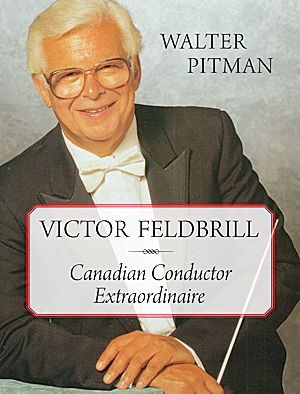 Victor Feldbrill: Canadian Conductor Extraordinaire
Victor Feldbrill: Canadian Conductor Extraordinaire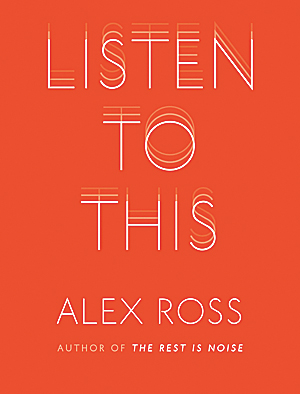 Listen to This
Listen to This Finishing the Hat
Finishing the Hat